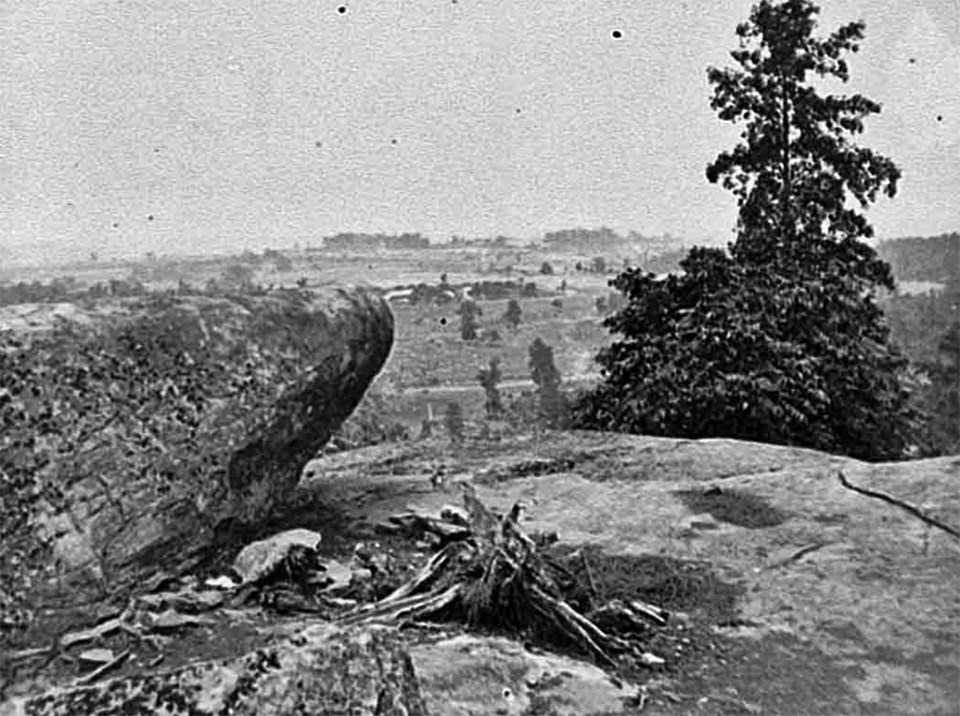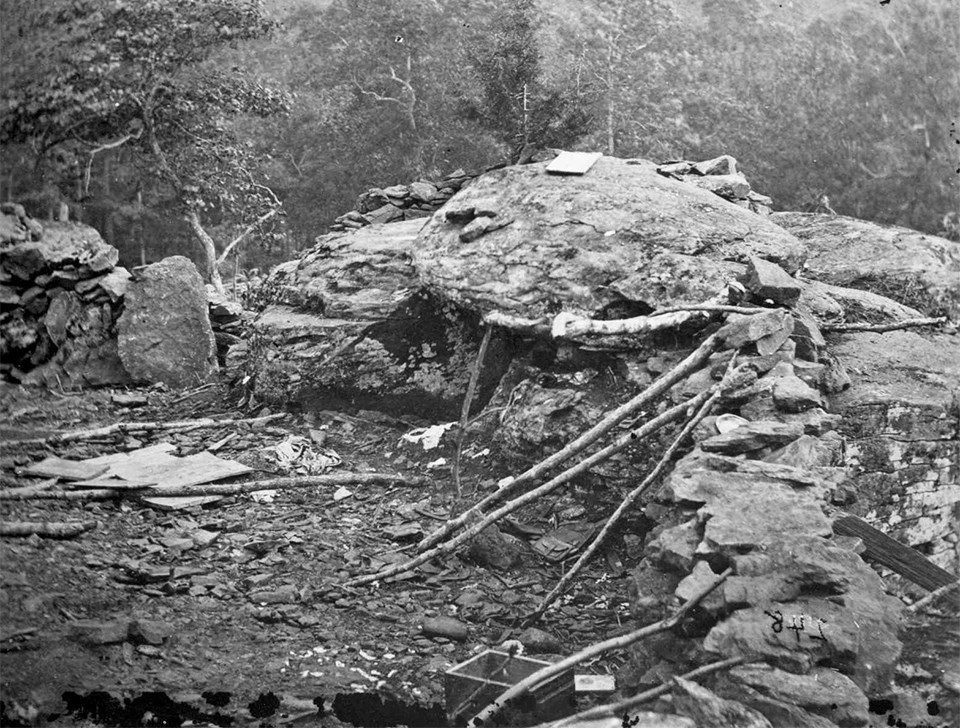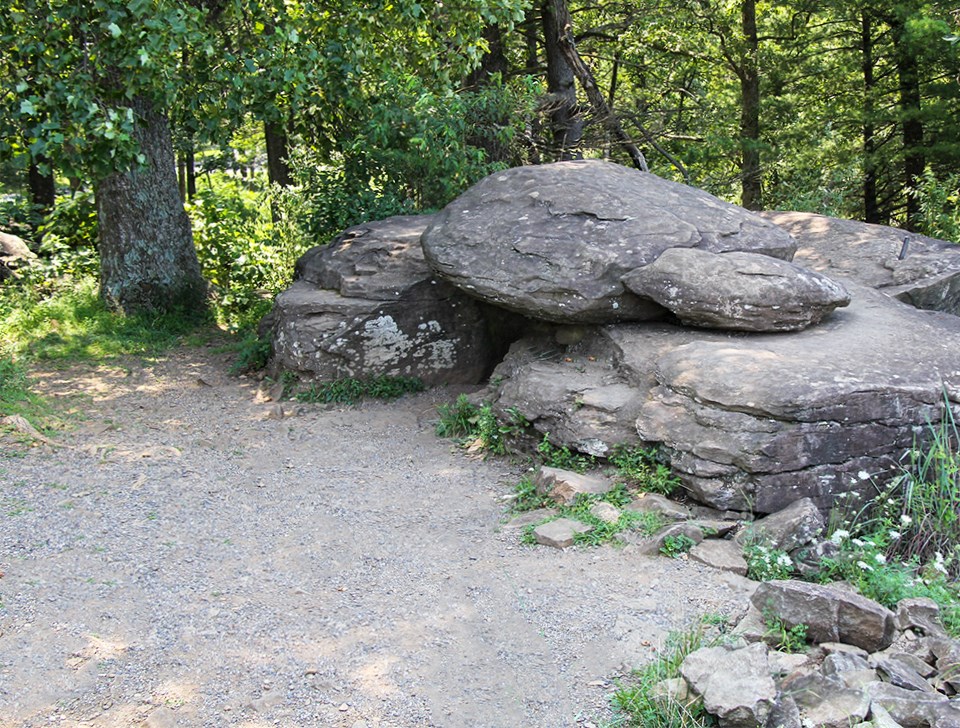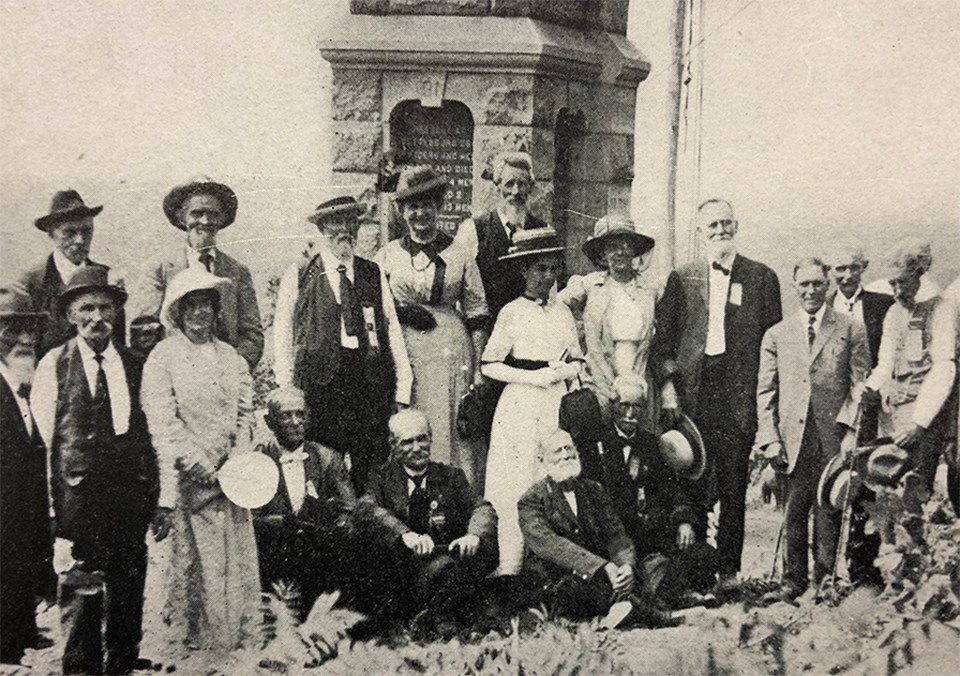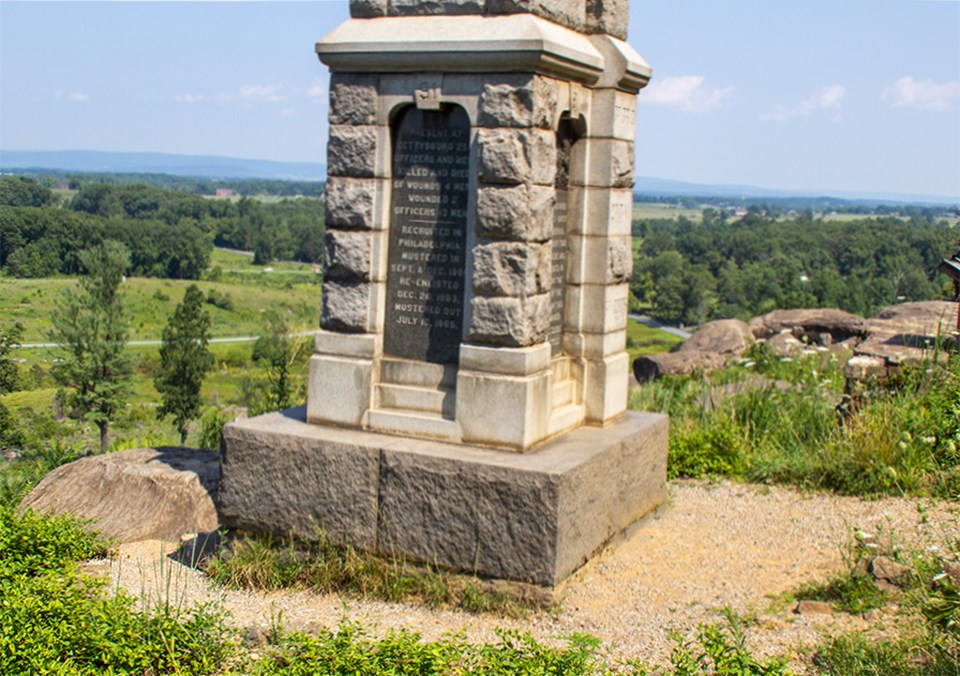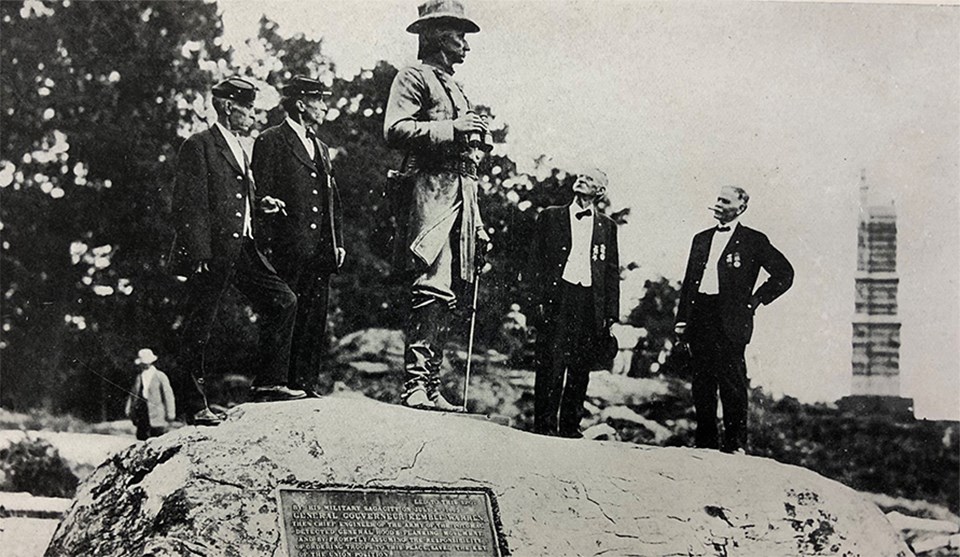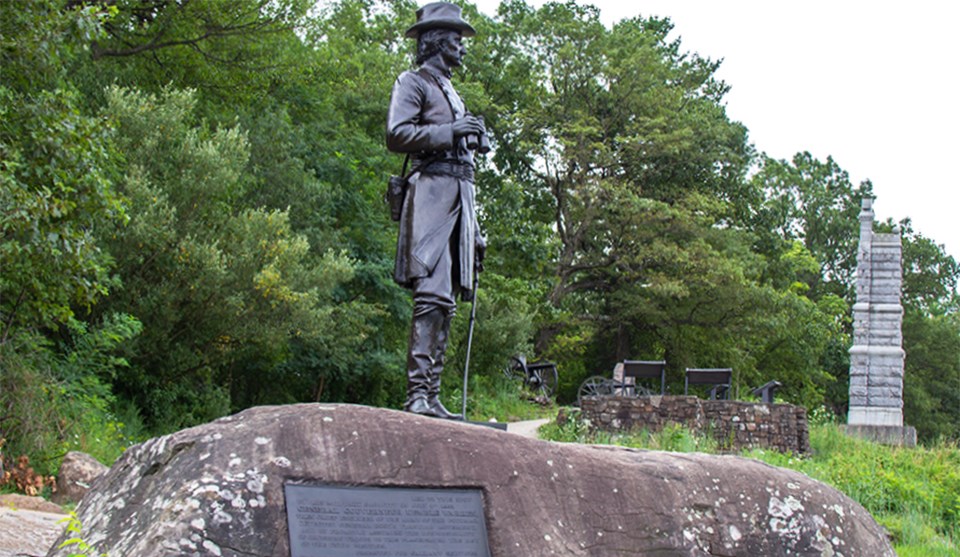|
1. Little and Big Round Top from the Valley of Death Then & Now
Left image
A photo of Little and Big Round Top, facing southeast. Photographer Matthew Brady can be seen leaning against a tree in the left foreground.
Credit: Library of Congress.
Right image
From today’s viewpoint, not much has changed other than the amount of growth on and near the Round Tops.
Credit: NPS Photo.
From this angle, it is easy to see why many soldiers called Little Round Top, ‘the mountain’. With its steep incline and rocky ground, one can only imagine how daunting it would be to try and ascend the slopes while under fire. On July 2, the Union army would gain the upper hand with their claim on this valuable piece of geography.
2. Summit of Little Round Top Then & Now
Left image
Little Round Top was the scene of intense fighting on July 2, 1863. From its summit looking northward, one could see much of Gettysburg, including the Codori farm, Oak Hill, the Brian farm, the “Copse of Trees” and the Wheatfield Road. Many of these place
Credit: Library of Congress.
Right image
A view from Little Round Top today. The Pennsylvania Memorial can be seen in the distance.
Credit: NPS Photo.
Little Round Top was the scene of intense fighting on July 2, 1863. From its summit looking northward, one could see much of Gettysburg, including the Codori farm, Oak Hill, the Brian farm, the “Copse of Trees” and the Wheatfield Road. Many of these places can still be seen today from the same vantage point.
3. Fortifications on Little Round Top Then & Now
Left image
Natural and manmade fortifications built by Union troops on July 2, 1863 on the southern slope of Little Round Top.
Credit: Library of Congress.
Right image
Three or four large boulders act as landmarks for the original photo. Although the area is heavily trod, remnants of the stone barricade can be seen to the right of the photo.
Credit: NPS Photo.
Little Round Top was not only a valuable defense point because of its height, but also because of its natural geography. The ‘mountain’, as some soldiers called it, was littered with large boulders which provided Union soldiers shelter from Confederate bullets. The three large boulders in this photograph would have given protection to the soldiers taking aim from behind them. Temporary stone walls would have been easy to build with the vast number of rocks nearby. This scene was captured by Timothy O’Sullivan just days after the battle.
4. 91st Pennsylvania Monument – 50th Anniversary of the Battle of Gettysburg in July, 1913 Then & Now
Left image
Veterans and friends pose in front of the 91st Pennsylvania monument on Little Round Top.
Credit: Fiftieth Anniversary of the Battle of Gettysburg report of the Pennsylvania Commission.
Right image
The monument as it stands today at the summit of Little Round Top. *NOTE: The asphalt plaza surrounding the 91st PA Monument was installed by the CCC in the 1930’s and subsequent work by the NPS built the base up to the bottom stone of the monument.
Credit: NPS Photo.
Veterans of the 91st Pennsylvania infantry and friends pose for a photo in front of the regiment’s monument during the 50th Anniversary of the Battle of Gettysburg in July, 1913. Erected in 1889, the monument honors those from this regiment who fought and sacrificed their lives at Gettysburg. The regiment brought with it 258 men to the field—of those, 3 were killed and 16 were wounded.
5. Gouverneur K. Warren Monument – 50th Anniversary of the Battle of Gettysburg in July, 1913 Then & Now
Left image
Veterans examine the monument to General Warren on the summit of Little Round Top. Behind them stands the monument to the 91st PA.
Credit: American Press Association – Fiftieth Anniversary of the Battle of Gettysburg report of the Pennsylvania Commission.
Right image
General Warren stands unchanged over a century later. The 91st PA monument behind him acts as a reference point to help align the ‘Then’ photo to the ‘Now’ photo.
Credit: NPS Photo.
General Gouverneur Kemble Warren was Chief Engineer of the Army of the Potomac at the Battle of Gettysburg. His monument stands on a large boulder at the summit of Little Round Top. Warren recognized how valuable Little Round Top was for the Union Army’s line on Cemetery Ridge, and discovering it unoccupied, directed Colonel Strong Vincent’s brigade to the hill’s defense followed later by General Stephen Weed’s brigade. Warren’s leadership in moving troops to this place proved critical for the Union army.
|


